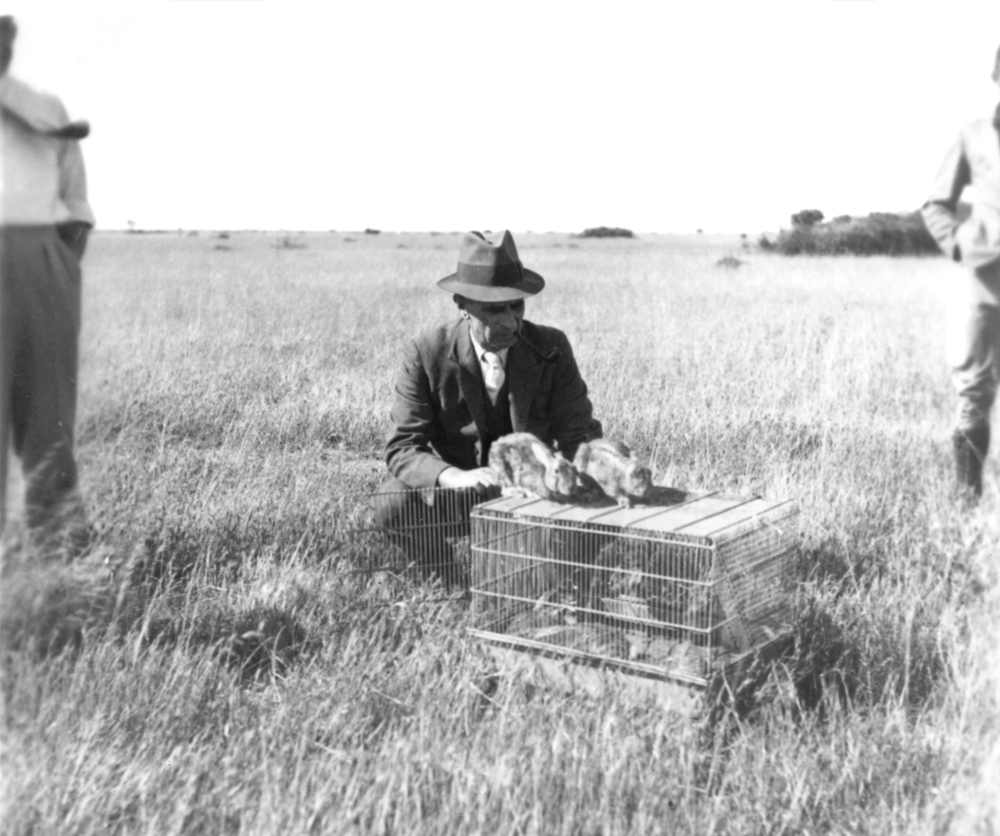The story behind Australia's rabbit plague
Laura Williams
31 August 2022, 9:10 PM
 Rabbits around a water hole as the species spread across Australia. (Image: Wikimedia Commons)
Rabbits around a water hole as the species spread across Australia. (Image: Wikimedia Commons)Following the arrival of the First Fleet in Australia in 1788, domestic rabbits would be imported time and time again to no effect. It wasn’t until 1859 that the rabbit population became invasive, spreading across all corners of the country.
So what triggered the rabbit plague that took over Australia?
While domestic rabbits were imported at a dime a dozen, it was the importing of wild rabbits at the Barwon Park estate near Geelong in Victoria that saw populations take off.
Thomas Austin imported the wild rabbits from his family’s land in the UK and within three years the ‘Austin rabbits’ had multiplied to the thousands, sprouting the ‘grey blanket’ that had spread across Australia by the 20th century.
More than 150 years since ‘Austin rabbits’ were introduced, a new study has found DNA to reveal that it was rabbits solely descended from Austin’s imports that have continued to wreak havoc across the continent.
The study found that it was genetic elements that allowed those rabbits to thrive while domestic rabbits barely moved beyond the confines of Sydney.
Senior author of the study Professor Francis Jiggins said the case is one of the most successful biological invasions in the world, attributing some credit to the genetic composition of the animal.
“There are numerous traits that could make feral domestic rabbits poorly adapted to survive in the wild, but it is possible they lacked the genetic variation required to adapt to Australia’s semi-arid climate,” Prof. Jiggins said.
Despite the construction of rabbit-proof fences, the deliberate introduction of the myxomatosis virus and other measures to control populations, rabbits remain a major threat to native flora and fauna to this day and cost the Australian agricultural sector and estimated $200 million per year.

The release of the myxomatosis virus. (Wikimedia Commons)
Lead author Dr Joel Alves said the study serves as a reminder that the actions of just one person, or a few people, can have a devastating environmental impact.
“These findings matter because biological invasions are a major threat to global biodiversity, and if you want to prevent them, you need to understand what makes them succeed,” Dr Alves said.
Across the west, wild rabbit numbers have declined in the last 15 years as a result of hemorrhagic disease virus 2, however the control is by no means total. Farmers continue to implement period control measures and just this week a population of rabbits was reported to be damaging graves in the Coonamble cemetery.




